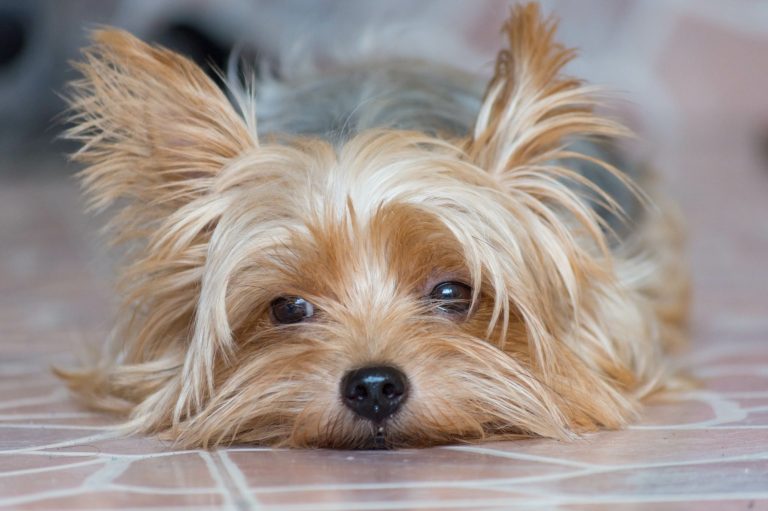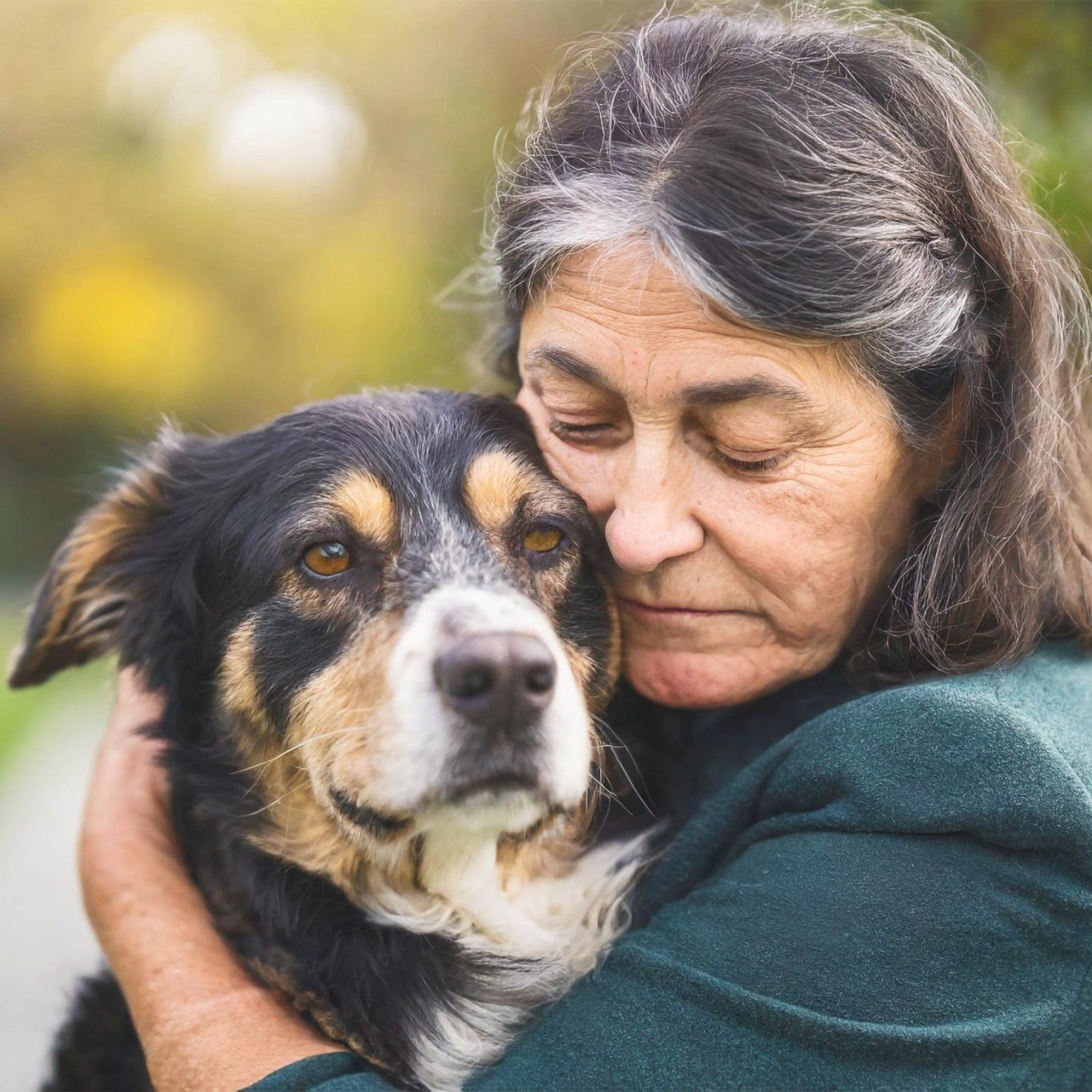Understanding Anxiety
in Dogs
For many dog parents, their furry friends are more than pets, they’re cherished members of the family. Yet, just like humans, dogs can experience anxiety. Whether it’s triggered by loud noises, new environments, or changes in routine, anxiety in dogs is more common than you might think. Understanding the signs, causes, and available solutions can make all the difference in helping your anxious pup feel calm and safe.
Common Signs of Anxiety in Dogs
Recognising anxiety in dogs can sometimes be tricky as their behaviours might seem like normal quirks. However, certain actions may signal they're feeling stressed or scared.
Here are some common signs:
Behavioural Signs
- Excessive Barking or Whining: Constant vocalisations, especially for no clear reason, can be a sign of distress.
- Pacing or Restlessness: Walking back and forth repeatedly is a common signal of nervous energy.
- Destructive Behaviour: Chewing furniture, scratching doors, or digging at carpets often happens when a dog feels trapped or panicked.
- Hiding: Some dogs retreat to small or dark spaces when overwhelmed.
Physical Signs
- Panting and Drooling: If it’s not hot or after exercise, sudden panting or excessive drooling may indicate anxiety.
- Tucked Tail: A tail tucked between the legs means your dog is feeling fearful or insecure.
- Shaking or Trembling: You might see this behaviour during thunderstorms or fireworks.
Other Observations
- Loss of Appetite: An anxious dog may refuse food or treats they usually love.
- Unusual Aggression: Some dogs react to anxiety with growling or snapping as an act of self-defense.
What Causes Anxiety in Dogs?
Dogs can be naturally sensitive creatures, and their anxiety may stem from various factors. Some causes are situational, while others might be deeply rooted in their history or genetics.

Genetics and Breed Tendencies:
Certain breeds, such as Border Collies or German Shepherds, are more prone to anxiety due to their high energy levels or intense need for stimulation.

Lack of Early Socialisation:
Dogs that didn’t receive adequate social exposure during their puppy years may grow to fear unfamiliar situations or people.

Past
Trauma:
Dogs adopted from shelters or rescues may carry scars of neglect or abuse, manifesting in anxious behaviours.

Separation
Anxiety:
Some dogs experience extreme distress when left alone, fearing abandonment. This can lead to howling, urinating indoors, or other destructive behaviours.

Changes in Environment:
Moving to a new home, the introduction of a new pet, or shifts in daily routines can unsettle dogs.

Noise
Phobias:
Thunderstorms, fireworks, or even the sound of household appliances can trigger fear.
Practical Solutions for Managing Anxiety
Thankfully, there are many ways to help your dog cope with anxiety. Every dog is unique, so finding the right solution may require some patience and experimentation.
1. Make Their Environment Calming
Create a space that feels comfortable and safe for your pup.
- Designate a Safe Zone: Consider setting up a crate, cozy bed, or secluded corner where they can retreat during stressful moments.
- Use Calming Tools: Products like pheromone diffusers or anxiety wraps, can offer comfort during high-stress times.
- Play Calming Music: Specialised dog playlists or white noise machines can block unsettling sounds.
2. Build Positive Associations
Help your dog replace fear with enjoyable experiences.
- Counterconditioning: For stimuli that normally scare them, gradually introduce the trigger at a distance while giving treats or rewarding calm behaviour.
- Desensitisation: For example, if your dog hates car rides, start by sitting in the car without turning it on, rewarding them with praise or treats, and slowly increase exposure.
3. Create Consistency Through Routine
Dogs thrive on predictability. Stick to regular feeding, walking, and play schedules, so there’s a sense of stability in their daily life.
4. Training Techniques
Professional training is invaluable for nervous dogs.
- Positive Reinforcement: Rewarding good behaviour rather than punishing anxious behaviours boosts their confidence.
- New Commands Like “Settle” or “Touch:” These can be calming cues for anxious moments.
5. Provide Mental and Physical Stimulation
A tired dog is often a calmer dog. Ensure they get enough exercise and mental engagement. Consider food puzzle toys or scent work games to keep their minds occupied.
6. When to Seek Professional Help
Sometimes, anxiety requires guidance from an expert:
- Veterinarians and Behaviourists: A vet may recommend medication, or a certified dog behaviourist can offer tailored strategies to manage your dog’s specific anxiety.
- Therapy Programs: Specialised programs for reactive or nervous dogs can provide long-term solutions.
You’re Not Alone in This Journey
Living with an anxious dog can be challenging, but with patience, empathy, and the right tools, you can immensely improve their quality of life and yours. Just remember, every small step they take toward confidence is a step worth celebrating.
At RANDO, we understand how deeply you care for your pup. The challenges of navigating their anxiety can feel overwhelming, but together, we can support our Reactive, Anxious, and Nervous Dogs in feeling safe and secure.
Because for them, you’re more than a pet parent, you’re their protector, their advocate, and their source of unwavering love. And that makes a world of difference. Have you tried any of these tips, let us know in the comments box below...

Enjoyed the Blog? Why Not Leave Us A Comment?
We need your consent to load the translations
We use a third-party service to translate the website content that may collect data about your activity. Please review the details in the privacy policy and accept the service to view the translations.
